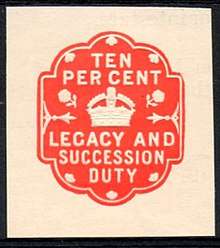Income tax threshold
The income tax threshold is the income level at which a person begins paying income taxes.[1] The income tax threshold equates to the:
- Personal allowance in the UK, which was £9,440 in 2013-14 and £10,000 in 2014-15, the highest in the G7.[2][3][4]
- Basic allowance in Germany, which was €8,004 in 2012.
- Income tax threshold in France, which was €6,088 in 2012.
- The standard deduction in the US, which was $12,000 in 2018 for a single person.
- Basic personal amount in Canada, which was C$10,822 in 2012.[5]
- Tax-free threshold in Australia, which was A$18,200 in 2012-13.[6][7]
- Tax-free threshold in Greece, which was €9,545 in 2016.[8]
- Tax-free threshold in Poland is 6600 PLN in 2018. Above 6600 PLN the tax-free becomes "tax-reduction" and decreases progressively [9]
See also
References
- ↑ http://www.taxpolicycenter.org/publications/url.cfm?ID=1001555
- ↑ "Income Tax rates and Personal Allowances". hmrc.gov.uk.
- ↑ Jones, Rupert (5 December 2012). "Personal tax allowance to rise to £9,440". the Guardian.
- ↑ "Income tax threshold set to rise". 5 April 2014 – via www.bbc.co.uk.
- ↑ Agency, Government of Canada, Canada Revenue. "2012 indexation adjustment for personal income tax and benefit amounts". www.cra-arc.gc.ca.
- ↑ What is the tax-free threshold? Archived 2012-07-01 at the Wayback Machine.
- ↑ "Individual income tax rates". ato.gov.au.
- ↑ "Tax-free threshold could be scrapped".
- ↑ Studio, Kemu. "CALCULLA - PL: Table of tax-free amounts". calculla.com.
This article is issued from
Wikipedia.
The text is licensed under Creative Commons - Attribution - Sharealike.
Additional terms may apply for the media files.
